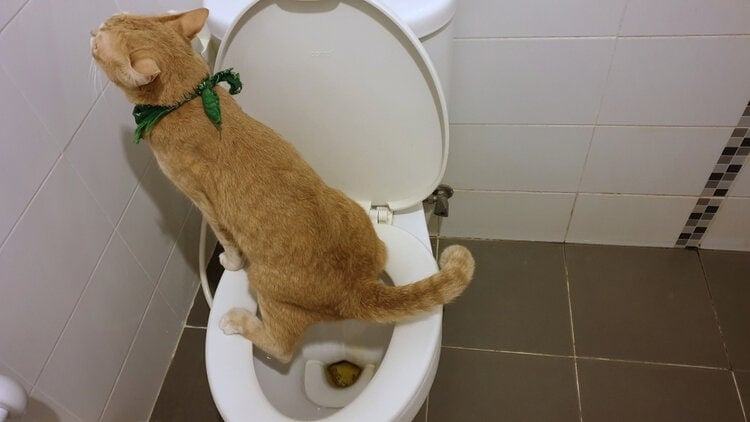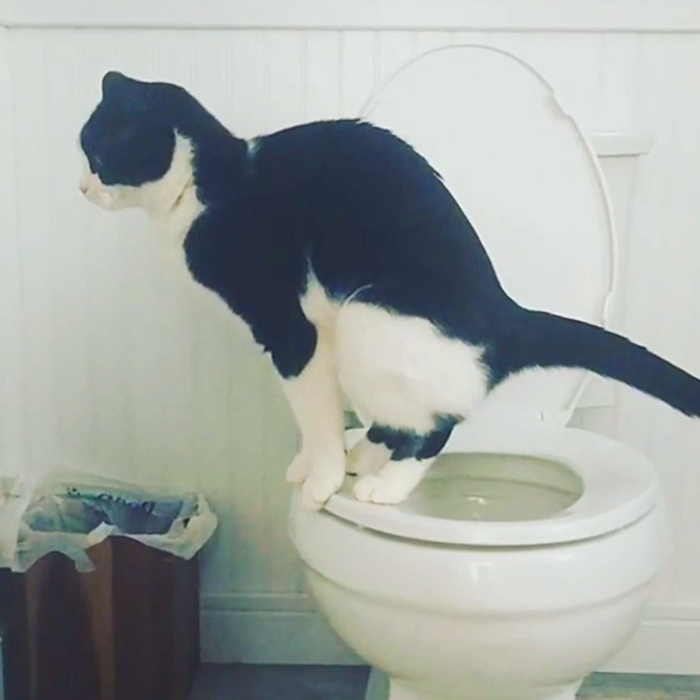The Importance of Not Emptying Animal Waste Down the Toilet
The Importance of Not Emptying Animal Waste Down the Toilet
Blog Article
We have stumbled on this article about Can You Flush Dog and Cat Poo Down the Toilet? below on the web and think it made sense to talk about it with you over here.

When it comes to dealing with waste, especially animal waste, many individuals frequently turn to the practical alternative of flushing it down the toilet. Nonetheless, this seemingly simple service can have significant effects for the environment and public health. In this post, we'll discover why flushing pet waste down the toilet is a poor concept and offer different approaches for appropriate disposal.
Intro
Appropriate waste disposal is critical for preserving ecological sustainability and public health. While it may seem safe to purge animal waste down the commode, it can cause numerous issues, both for the setting and human wellness.
Risks of flushing pet waste
Environmental impact
Purging animal waste presents harmful germs and virus into waterways, which can adversely influence aquatic ecosystems. These virus can contaminate water sources and harm aquatic life, interfering with fragile ecological communities.
Public health concerns
Animal waste has harmful microorganisms such as E. coli and Salmonella, which can posture serious health threats to human beings. Flushing pet waste down the toilet can pollute water products, causing the spread of diseases and infections.
Alternatives to flushing
Rather than purging pet waste down the commode, there are a number of different disposal methods that are extra eco-friendly and hygienic.
Composting
Composting animal waste is an eco-friendly means to dispose of it. By composting, raw material is broken down into nutrient-rich dirt, which can be utilized to fertilize gardens and plants.
Garbage dump disposal
Disposing of pet waste in a land fill is one more option. While not as environmentally friendly as composting, it is a safer option to flushing, as it avoids the contamination of water sources.
Pet dog garbage disposal systems
There are customized animal waste disposal systems available that securely and hygienically get rid of pet waste. These systems typically use enzymes to break down waste and remove odors.
Actions to proper animal waste disposal
To guarantee correct disposal of pet waste, comply with these steps:
Scooping and bagging waste
Frequently scoop and bag animal waste utilizing eco-friendly bags. This protects against waste from polluting the setting.
Using marked waste bins
Dispose of bagged animal waste in designated waste containers, such as garden compost containers or land fill containers. Prevent flushing it down the bathroom in all read more costs.
Cleansing can and pet locations on a regular basis
Routinely tidy can and pet dog locations to avoid the accumulation of waste and germs. Usage pet-safe cleansing items to keep hygiene.
Benefits of appropriate disposal techniques
Adopting proper disposal methods for animal waste uses numerous benefits:
Reduced environmental pollution
Correct disposal techniques lower the danger of environmental pollution, securing rivers and ecological communities from contamination
Reduced danger of water contamination.
By preventing flushing pet waste down the commode, the threat of water contamination is dramatically lowered, guarding public health.
Improved sanitation and hygiene
Correct disposal approaches promote much better sanitation and hygiene, creating a much safer environment for both people and animals.
Final thought
Finally, purging animal waste down the bathroom is unsafe to the setting and public health. By embracing different disposal methods and complying with correct waste monitoring techniques, we can reduce the unfavorable impact of pet waste and contribute to a cleaner, healthier planet.
What To Do With Dog Poo – The Do's And Don'ts Of Disposing Of Faeces
Dog poo bins
Some councils provide dedicated dog waste bins in popular dog-walking areas that can take dog poo that has been bagged but you can legally dispose of dog waste in any public litter bin, as long as it is securely bagged. This also applies to your wheelie bin at home.
Do not flush
Water companies do not recommend flushing dog faeces down the toilet because certain parasites can survive the water processing treatment and are potentially harmful to humans. You should also never consider flushing dog poo that has been bagged down the toilet as the bags will not break down and instead create severe blockages in the sewage system.
In the woods
The Forestry Commission promotes a ‘stick and flick’ method for dealing with waste in the woods. This means finding a stick and using it to flick any poo from off the path so that it is out of the way of other walkers. You could also bury it as long as it is not in an area where there might be livestock.
Livestock
Parasites found in dog poo can be transmitted to livestock if they inadvertently eat infected faeces that has been left on grazing land. This could result in the death of sheep or abortion in cattle so you should always make sure you pick up your dog’s waste in fields where livestock could be present.

Routinely tidy can and pet dog locations to avoid the accumulation of waste and germs. Usage pet-safe cleansing items to keep hygiene.
Benefits of appropriate disposal techniques
Adopting proper disposal methods for animal waste uses numerous benefits:
Reduced environmental pollution
Correct disposal techniques lower the danger of environmental pollution, securing rivers and ecological communities from contamination
Reduced danger of water contamination.
By preventing flushing pet waste down the commode, the threat of water contamination is dramatically lowered, guarding public health.
Improved sanitation and hygiene
Correct disposal approaches promote much better sanitation and hygiene, creating a much safer environment for both people and animals.
Final thought
Finally, purging animal waste down the bathroom is unsafe to the setting and public health. By embracing different disposal methods and complying with correct waste monitoring techniques, we can reduce the unfavorable impact of pet waste and contribute to a cleaner, healthier planet.
What To Do With Dog Poo – The Do's And Don'ts Of Disposing Of Faeces
Dog poo bins
Some councils provide dedicated dog waste bins in popular dog-walking areas that can take dog poo that has been bagged but you can legally dispose of dog waste in any public litter bin, as long as it is securely bagged. This also applies to your wheelie bin at home.
Do not flush
Water companies do not recommend flushing dog faeces down the toilet because certain parasites can survive the water processing treatment and are potentially harmful to humans. You should also never consider flushing dog poo that has been bagged down the toilet as the bags will not break down and instead create severe blockages in the sewage system.
In the woods
The Forestry Commission promotes a ‘stick and flick’ method for dealing with waste in the woods. This means finding a stick and using it to flick any poo from off the path so that it is out of the way of other walkers. You could also bury it as long as it is not in an area where there might be livestock.
Livestock
Parasites found in dog poo can be transmitted to livestock if they inadvertently eat infected faeces that has been left on grazing land. This could result in the death of sheep or abortion in cattle so you should always make sure you pick up your dog’s waste in fields where livestock could be present.

I have been very taken with 10 Things You Should Never Flush Down The Toilet and I'm hoping you appreciated our article. Sharing is good. Who knows, you will be helping someone out. I am grateful for your time. Return soon.
Book Now! Report this page